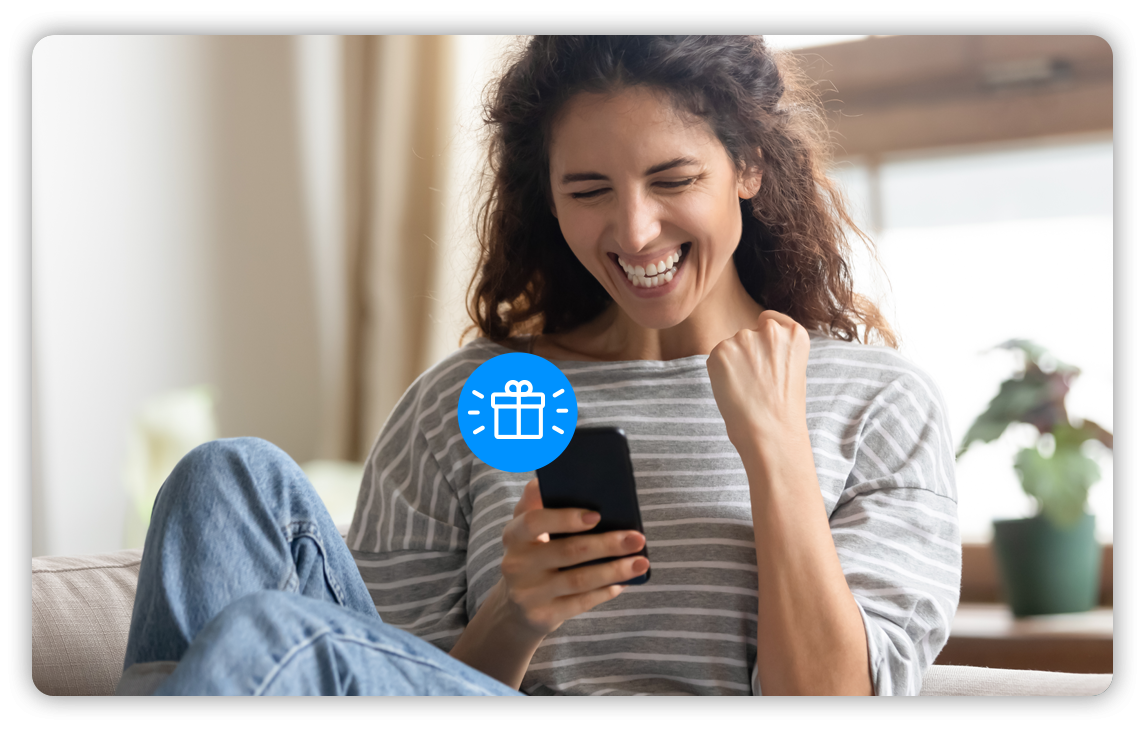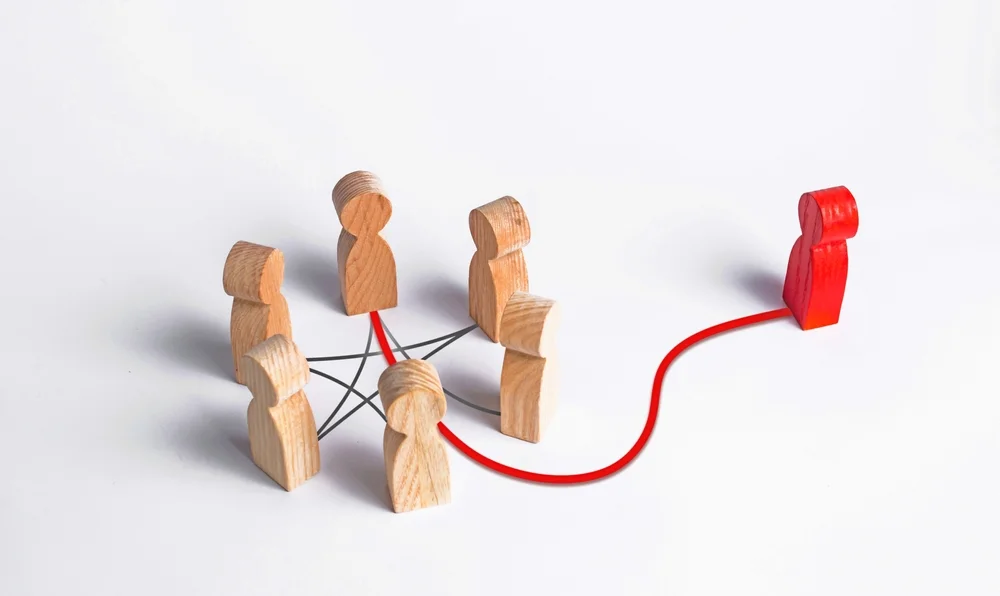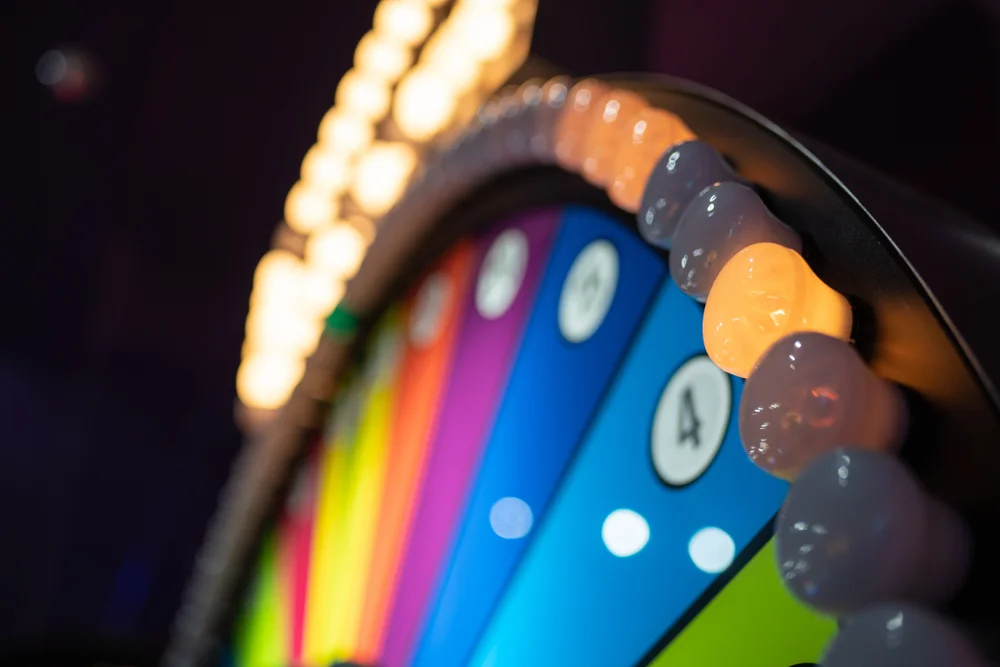Gamification in marketing enables brands to immerse their prospects and customers in highly differentiating interactive experiences. There are many examples of gamification in marketing. The element of fun, the promise of a reward and the opportunity to test your skills are factors that make this approach more effective than traditional promotional formats.
From brand discovery to conversion and loyalty building, gamification offers easy-to-personalise engagement mechanisms. This strategy can be deployed in-store (using interactive terminals or QR codes to be scanned) and online (on-site, in-app, on social networks, via a multimedia advertising campaign, etc.).
To make the most of this marketing tool, your brand can take inspiration from gamification examples. In this article, we share 4 successful use-cases, to be deployed at stages of the customer journey and across marketing channels.
SUMMARY
1. Engaging prospects and customers in-app: the example of Quick
As well as increasing the number of downloads and unique users, the challenge for brands that developed their application is to engage and retain users. Gamification offers the opportunity to animate a community effectively, encouraging them to return to the application regularly, and to become VIP members.
One example is the Quick strategy. This fast-food chain has launched an innovative marketing campaign, featuring Tony Parker and interactive elements. The main objectives of this gamification campaign were to generate new leads and engage users, but also boost sign-ups to the loyalty program.
Quick has therefore opted for a Playable App format (native ads that integrate with the mobile experience) and for the Outrun. This campaign enabled Quick to recruit around 4k subscribers in 1 week, 69% of whom were opt-in (a record in the restaurant sector).
The engagement target was met with this fun format, which saw almost 20,000 games played. That illustrates the addictive nature of the game and the retention power of such an operation on a mobile application.
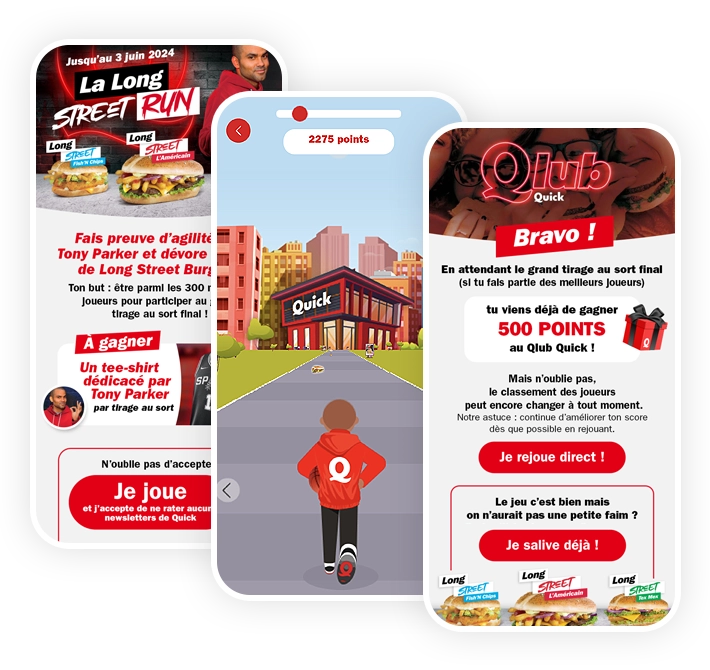
2. Animating your points of sale with interactive terminals: the example of Galerie Lafayette
To attract consumers to their shops, keep them there as long as possible, and encourage them to go checkout (and increase their average shopping basket). Retail companies need to focus on retail marketing levers. Gamification captures the attention of visitors and encourages them to buy in-store.
Galeries Lafayette have opted for interactive marketing by installing interactive terminals in 6 of their outlets. For Mother’s Day, the brand offered the chance to take part in a 3-days 100% winning One-Armed Bandit.
Moreover, the aim of this Playable Marketing campaign was to animate points of sale for this key date. The results exceeded expectations in terms of in-store participation, demonstrating a real interest in the event and the success of this initiative.
A One-Armed Bandit was also available in mobile format in all shops in France via a QR code. By opting for this cross-channel strategy, the company increased the reach of its campaign.
To conclude, this enabled the brand to bring all its shops to life simultaneously. In fact, with a 100% winning concept that was particularly attractive, as all participants won a prize. What’s more, this co-branding operation allowed to collect opt-ins for Galerie Lafayette and its partner brand, Rosemood.
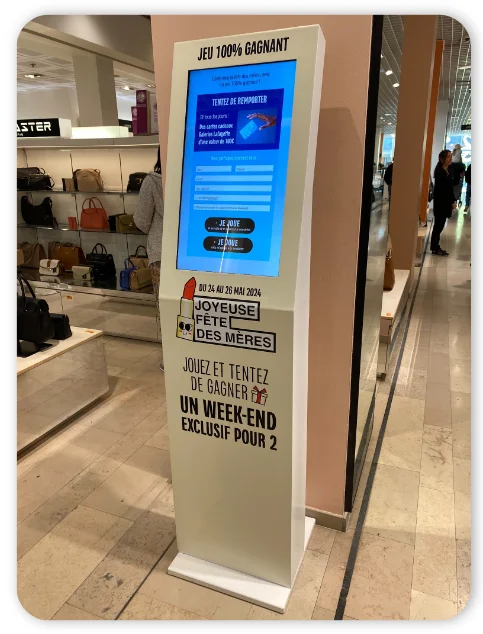
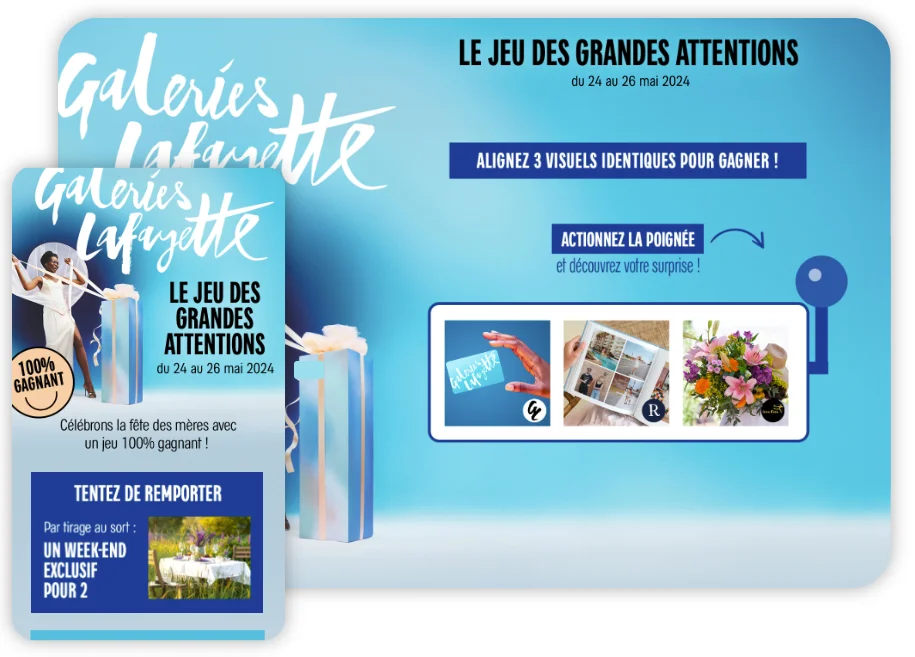
3. Promoting products through gamification: the example of La Roche Posay
To boost their conversion rate and generate more sales, brands also need to innovate to promote their products. Consumers are now sensitive to other mechanisms, in particular social proof (via the opinions of other customers) and interaction with brands.
For its 4 new serums on the Showroomprivé marketplace, La Roche Posay opted for interactive marketing. In this example, the company deployed a 100% winning moment to recruit new qualified leads and boost sales.
This format enabled the company to distribute discount codes. The campaign encouraged participants to make a purchase. In addition, the campaign redirected users to the brand’s website, maximising conversions.
But the campaign also enabled La Roche Posay to qualify new prospects by allowing them to choose their favorite serum at the beginning of the game. The brand was able to collect customer preferences to understand their needs. Thanks to the nearly 20,000 opt-ins collected, it can now retargeting for future operations.
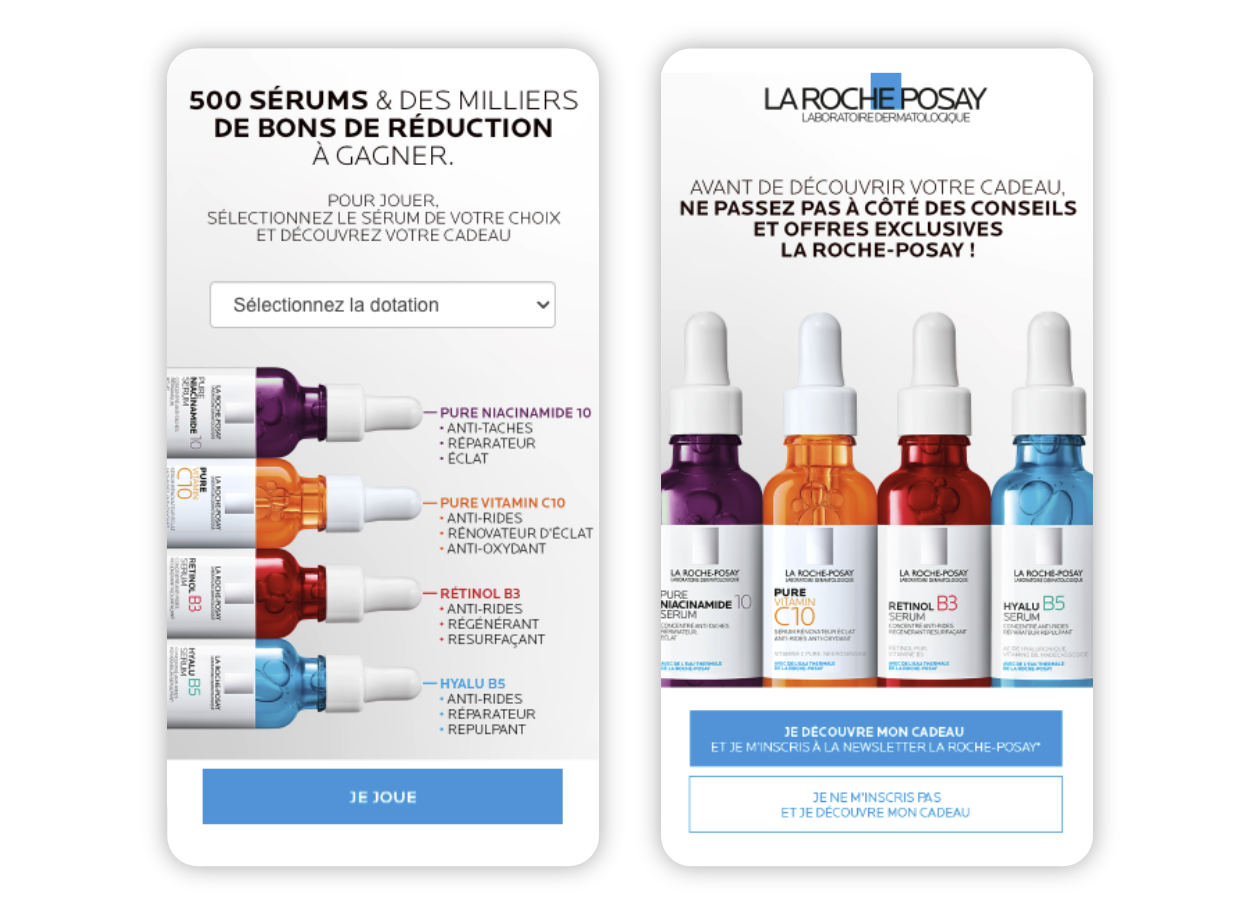
4. Enriching your customer database: the example of Cyrillus
Enriching and qualifying the CRM database is a crucial marketing challenge for brands. This wealth of information enables to better address the needs of its target audience. Indeed, it permits to offer personalised content and offers, and thus convert consumers to various product and service ranges.
To collect and qualify customer data, retailers can rely of gamification. Interactive formats and attractive prizes make it possible to capture the attention of an audience and encourage them to fill in a form. Moreover they can share product preferences using a game mechanic (such as Swiper).
Cyrillus opted for this strategy in order to reach and convert its core target, young mothers. Its gamification campaign was based on a form with a prize draw at the end of the game.
The operation enabled them to pack in the precious missing information (children’s first names + dates of birth + missing telephone numbers). This data can then be reactivated in future campaigns to help the brand communicate at the right time and on the right offer.
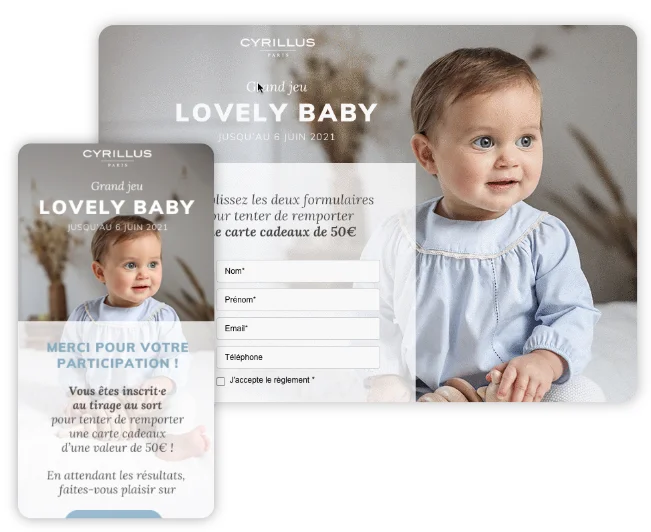
Conclusion
These successful examples of gamification show that this tool can be used to meet the complex challenges faced by brands. Whether you’re looking to recruit new leads, animate your community or build loyalty among your customers, interactive formats allow you to stand out form the crowd and better address your audience. Discover our catalogue of marketing games and interactive format and roll out more dynamic, high-performance campaigns!


